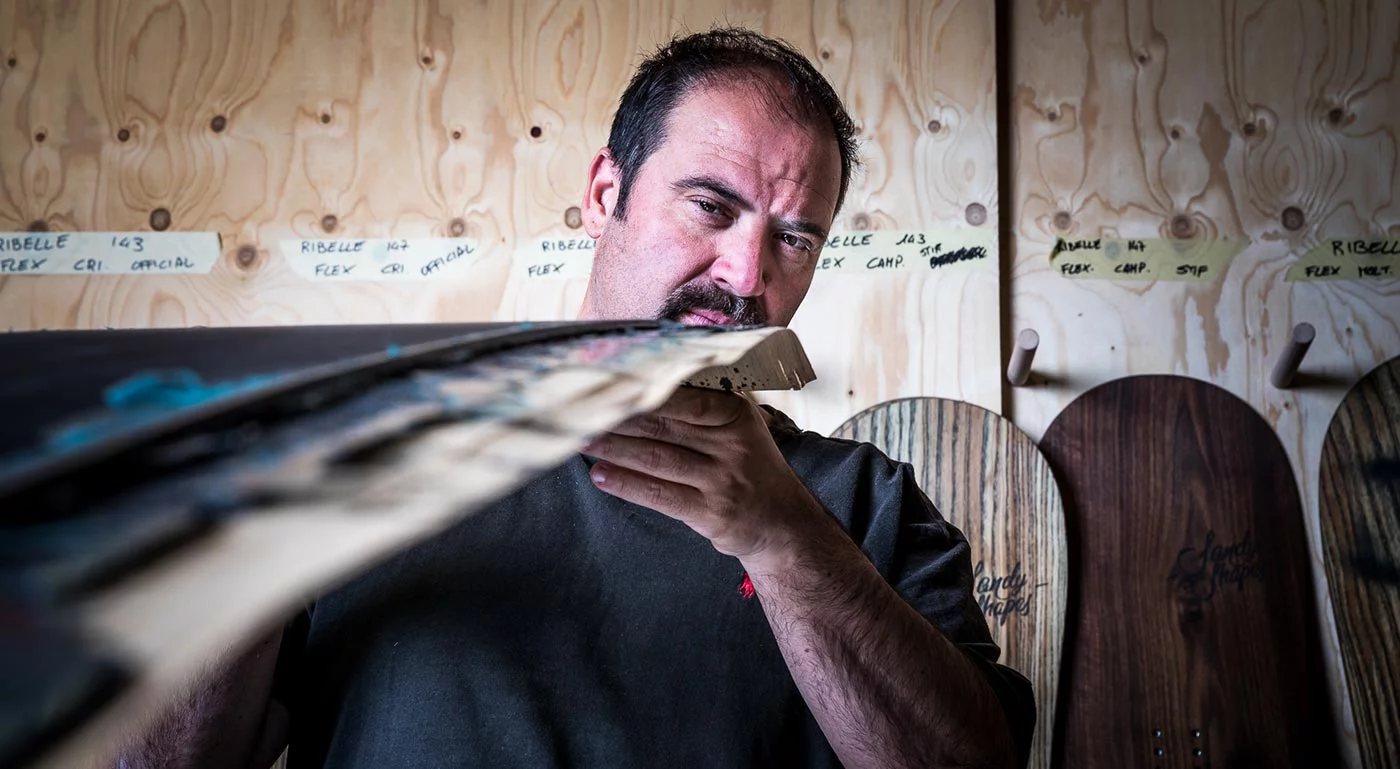SNOWBOARD FEATURES AND SPECS
Profiles and Specs for the Sandy Shapes Snowboards and Splitboards
This page will teach you everything you need to know about Snowboard Features and Specs, and will guide you in choosing the right Snowboard or Splitboard for your riding style. Snowboard terms and definitions explained in detail by Sandy.
SHAPES

A twin-tip is a symmetric shape between tip and tail, that can be used in both directions as the rider is perfectly centered. Born as a freestyle geometry board, today, it is also used for all-mountain boards, thanks to its ease of use and stability.

Directional boards are focused to give their best in one direction. The tip is longer and wider than the tail and the bindings are moved backwards from 2cm in the all-mountain boards, to 8cm in powder boards. Directional boards are versatile but find their best environment carving on the slopes and in deep snow.

This sidecut was born from an existing project, where the circular arcs have been replaced by straight lines. With this solution, the pressure is uniformly distributed over the entire length of the edge. A board with this technology will be the best choice for maximum grip on hard surfaces.

Our fake twin-tip keeps the same sidecut of a twin-tip snowboard but has a different tail and tip, which make this board versatile in all-mountain and more suitable for all snow conditions. The shorter and flattened tail improve it’s manoeuvrability and handling, even on large boards, and combined with a wider tip it favors floating in powder snow, while maintaining the playful character of a twin-tip.

A swallowtail snowboard is characterized by a V-tail which, as the name says, resembles that of a swallow or a fish, taking inspiration from the surfing world. It is an ideal shape for deep powder snow, where the shape of the tail and its reduced volume, combined with an average wide nose and the setback, facilitate the snow passage under the board and gives a floatation and ‘surfy feeling’ even in the deepest powder.

Concept and construction introduced by Burton, “raduction” allows you to use a snowboard 8-10 cm shorter than your normal size. A presumably small board, but with great performance for maximum fun. Its reduced size and lightness make it easy to control and also perfect for learning, from carving to tricks, while its particular structure guarantees stability and grip equal to those of a normal board.
WOODCORE PROFILES

The negative core profile is characterized by a reverse thickness, increased by correspondence with the feet position and thinned at the ends and in the center of the snowboard. Negative core is ideal on wide boards and to increase the sensitivity under the feet, guaranteeing a great leg independence.

This profile is given by an increase in thickness of the wooden core that starts from the tip and tail to reach the maximum height under the feet, keeping it constant at the center of the snowboard. This way we get powerful and stable boards oriented to speed and we reinforce the splitboards internal edge for the ascents.

MULTISTRINGER
The board’s woodcore is made with thinner wood strips in the outer part, close to the sidewalls. This technology allows the recreation of real surfing sensations, giving a good bending, making the board extremely pleasant underfoot, also in wider boards, despite their big sizes.
SHAPE PROFILES

The camber is positioned under the feet, which have been moved backwards from 2 to 8 cm. The tip, longer than the tail, has a very soft rocker curve while the latter has a short radius one. It is an all-mountain directional profile, ideal for carving on fresh snow but incredibly agile and responsive on the slopes as well.

The arch extends in the binding area becoming flat before reaching the tip and tail, then it rises up with a very wide radius. Making it a highly responsive and accurate profile for those who want a great edge grip on hard snow and a powerful board when ollying. This profile is recommended for more experienced riders.
The line is a soft and continuous ellipse in the entire length, making it a very responsive board with a great versatility, fast when turning and ollying, with a good floatation on fresh snow. Definitely a very versatile choice, suitable both for beginners and freestyle lovers.

